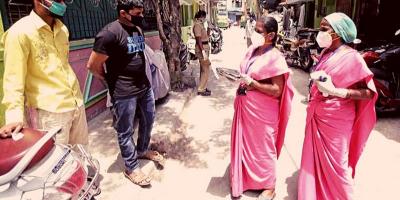Edlyn Cardoza | February 21, 2021 | Mumbai
From the COVID-19 pandemic, we have come to understand and learn two positives. One, there is constantly a growing realisation of the requirement and necessity to invest in primary health, and second, there is recognition of the important role of Accredited Social Health Activist (Asha) workers at the grassroots. Their performance in the face of all odds should push the government to think about how to make it more effective in delivering grassroots medical care and how to strengthen this cadre. One initiative ought to be to induct more male healthcare workers into the system. This is an ideal time to make community health work more attractive for all genders.

In the first place, the incentive structure should change. India has 900,000 Asha workers who get an honorarium of Rs.2,000 to Rs.4,000, depending on the state government. They get minor incentives for repeating tasks, with every worker being responsible for up to 2,500 individuals in her district.
They should be given post-retirement benefits and other incentives if India is to build and expand on this significant cadre. The pandemic may retreat, however a host of health care issues have to be dealt with. Rather than piecemeal payments linked to tasks, there should be a drastic overhaul in their pay structure. A non-governmental organisation (NGO) worker in the field told Hindustan Times that the government’s rationale in certain states is that task-based incentives keep the Asha worker on her toes. This kind of approach is unacceptable and wrong. Regardless of whether the remuneration is called an honorarium rather than a salary, it is time for state governments to start considering to provide Asha workers with the job security that other medical professionals get.
During the pandemic, many were given a brief time of training on how to deal with the deadly virus and its aftermath. Their workload increased radically without commensurate infrastructure. However, they have come up trumps. This calls for inventive strategies to better their lot.

Another zone that requires re-evaluation is career progression. Asha workers should be given the opportunity, through the Skill India programme, to move to the next level in health care, should they choose to do so. There ought to be
year-round training for them in rural settings and a lot more engagement with them to determine their personal aspirations for professional growth. One essential step has been the commitment of the National Health Mission to pay the fees for Asha workers who wish to finish their secondary education through the open school system and for them to be given preference in admissions to nursing schools.
Likewise, they should also be given access to information about institutions where they can facilitate their skills and avenues of employment open to them. Through the panchayat system, there should be community recognition of their efforts; something which could encourage more individuals, and hopefully men too, to join the grassroots health care system. Their necessities for instance, crèches for their children, overnight rest rooms, sanitation facilities and safety must all get priority now. They should likewise also have access to proper grievance redressal forums.

If the right inputs are made into the Asha system now, it can then have the potential to change and improve health care at the grassroot level and furthermore in the end correct gender inequalities in the communities they function in. Much will rely upon the respect, recognition and rewards that both the central and state governments afford them for their role in holding together a broken-down grassroot health care system in the most challenging time.
References:
https://www.hindustantimes.com/opinion/incentivise-health-workers-on-the-ground-101613827752225.html
Image Sources:
- The Wire
- The Hindu
- New Indian Express
- Time Magazine



















































































